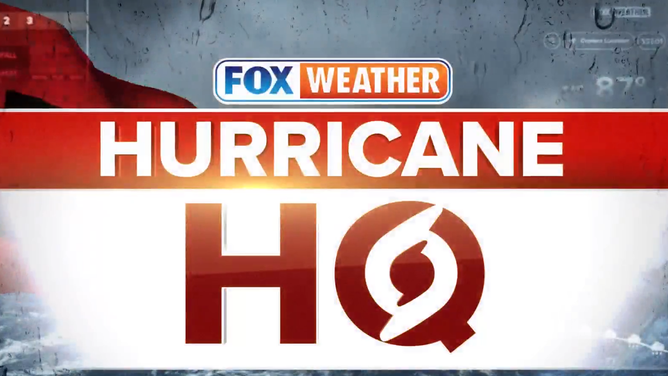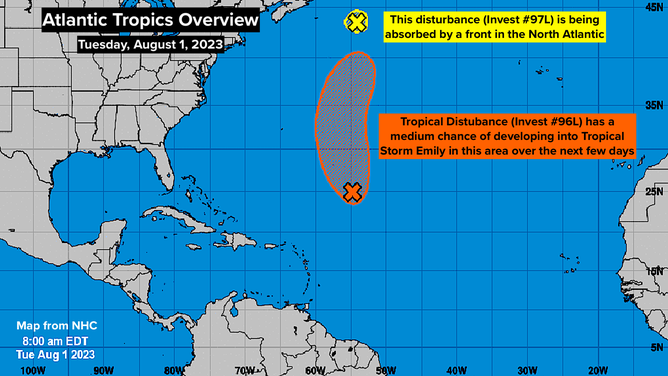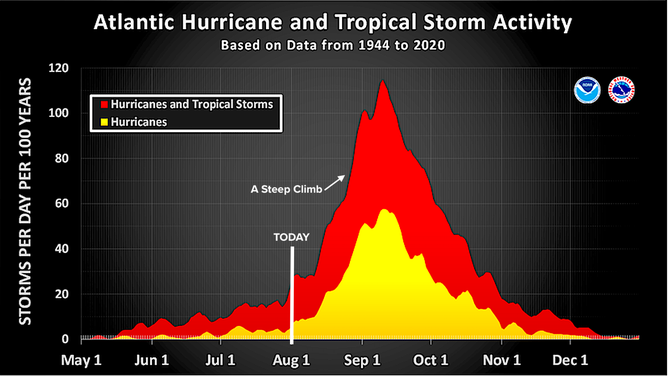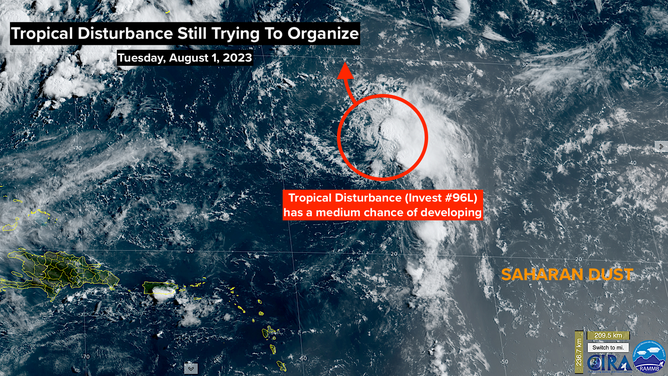Bryan Norcross: Kicking off August with a struggling Atlantic system Invest 96L, dusty tropics
On average, the odds of a tropical storm or hurricane developing increase dramatically in August.

FOX Weather is your Hurricane HQ, streaming free 24/7.
(FOX Weather / FOX Weather)
UPDATED Tuesday at 9 a.m. ET
The Tropical Disturbance in the middle of the Atlantic – officially called Invest 96L – appears a bit less likely to develop than it did yesterday. It ran into strong upper-level winds, which are pushing the thunderstorms off to the right side of the circulation. For the system to organize and intensify, the winds would have to let up to allow the thunderstorms to wrap around the center. There’s still a chance that could happen.
Some dry air has wrapped into the circulation as well, which is restricting development. The National Hurricane Center has lowered the odds that the disturbance will organize to medium.

Invest 96L in the Atlantic.
(FOX Weather)
The winds in the thunderstorm cluster are already estimated to be over 40 mph, so the system would likely jump directly to Tropical Storm Emily if the atmosphere lets it pull together. Hostile conditions are ahead, so the disturbance’s odds of development will likely decrease if it can’t find a conducive patch of atmosphere over the next couple of days.
Farther north, the disturbance Invest 97L that moved off the Mid-Atlantic is flying past Atlantic Canada. It’s being absorbed into a frontal system and should lose its individual identity today.
On average, the odds of a tropical storm or hurricane developing increase dramatically in August. This famous graph by the National Hurricane Center shows the chances of having a named storm or hurricane in the Atlantic, Caribbean, or Gulf of Mexico on each date in the hurricane season.

National Hurricane Center Atlantic storm development chart.
If you look at Aug. 1 on the red graph and look at the number on the left, you see that there’s about a 25% chance of a tropical storm being active on this date. The hurricane odds, which you see in the yellow graph, are much lower – maybe 5% or about 1 in 20 years.

NOAA satellite image of Invest 96L.
Notice that the odds of an active tropical storm or hurricane increase quickly and dramatically through August as Saharan dust season ends, the upper winds become less hostile, and the ocean heats up. Although this year, the tropical ocean has been at September levels all season.
After the peak around Sept. 10, the odds decrease more slowly than they rose, which means the hurricane season has a longer second "half."
But for now … it’s under control. No threats are expected for the next week, at least.